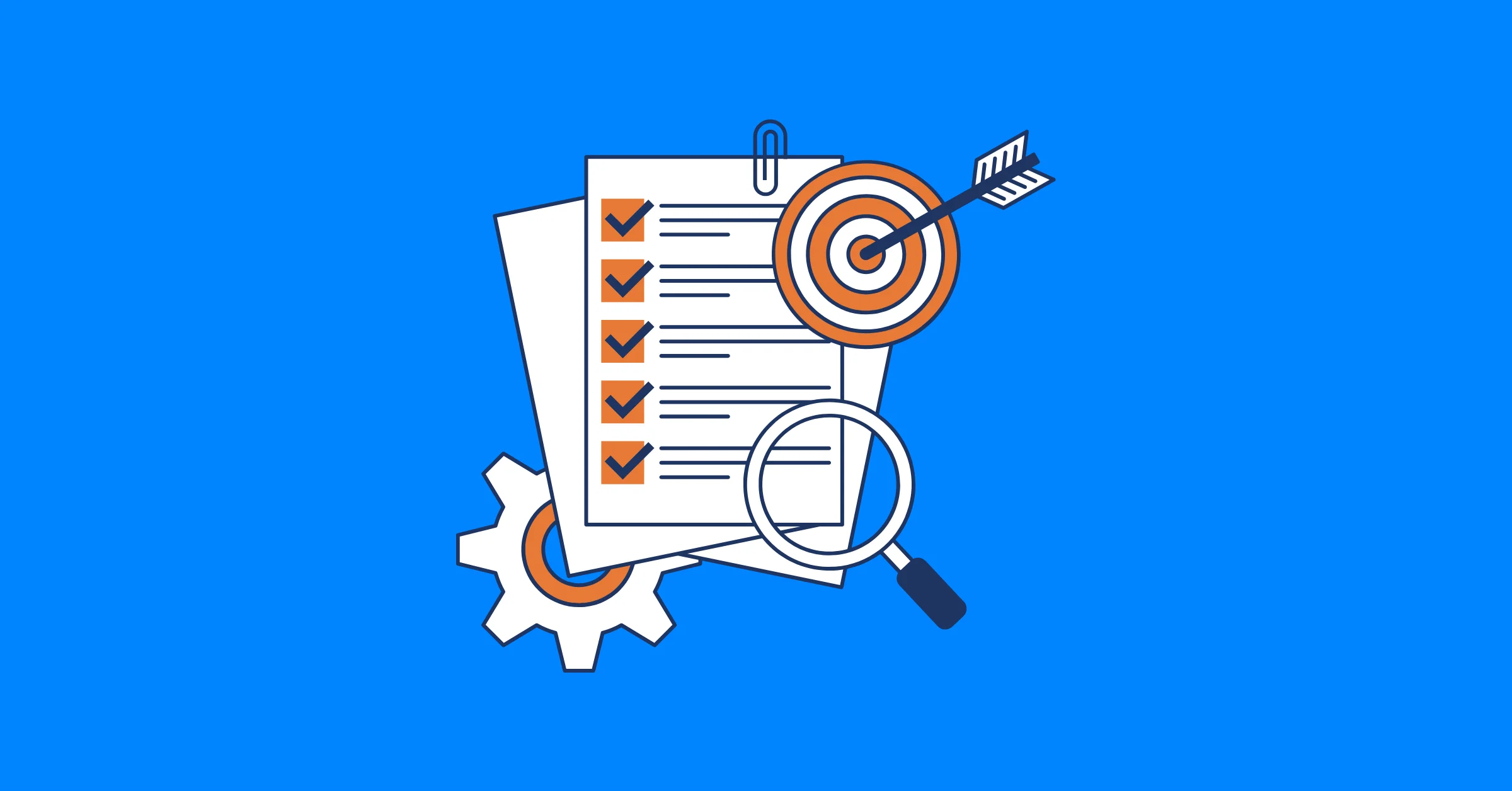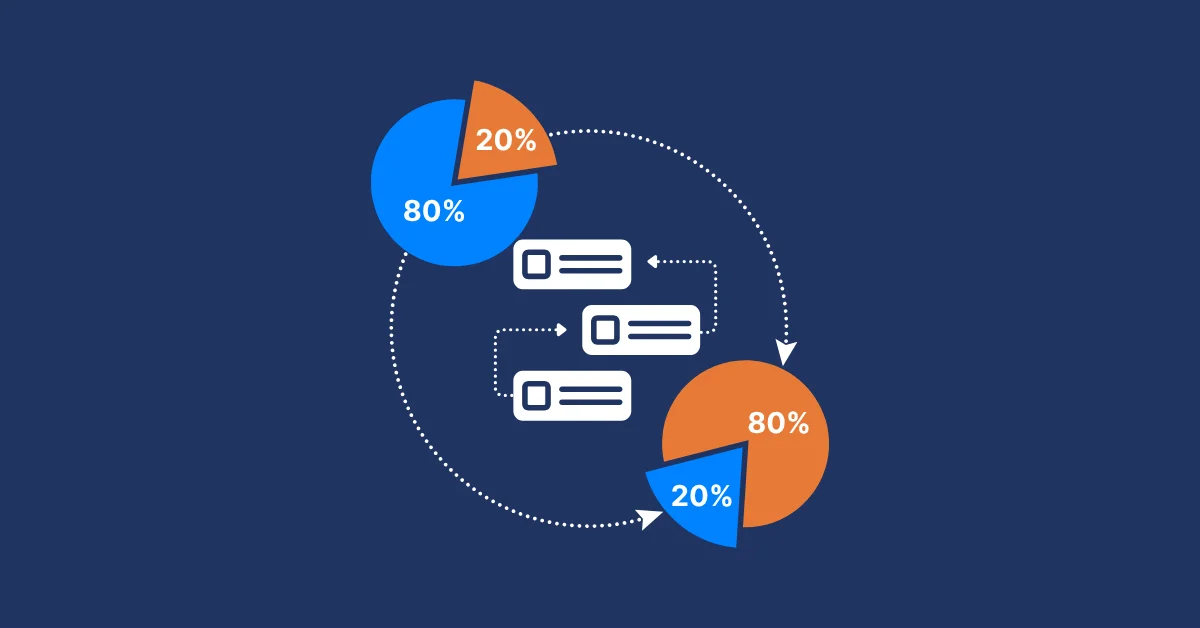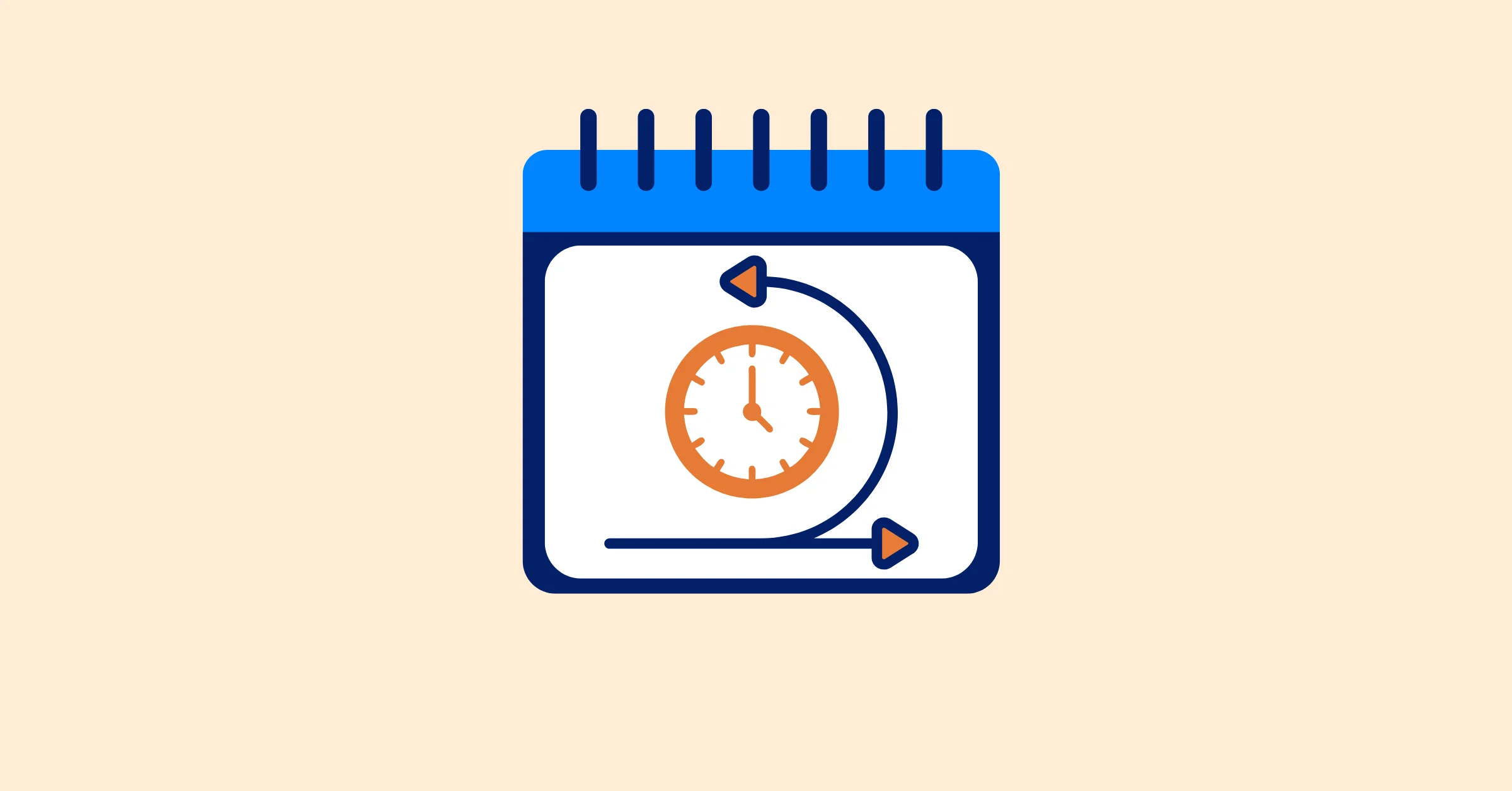Applying the 80/20 Rule to Agile Backlog Prioritization
Learn how to apply the 80/20 Rule to your Agile backlog to improve prioritization, reduce waste, and deliver high-value results more efficiently.
Managing an Agile backlog can quickly become overwhelming. As new requests, enhancements, and bugs pile up, teams often lose sight of what truly matters. The result? Endless lists, blurred priorities, and delayed value delivery.
That’s where the 80/20 Rule, also known as the Pareto Principle, proves invaluable. By focusing on the 20% of backlog items that deliver 80% of the value, Agile teams can reduce waste, improve focus, and deliver results that genuinely move the needle.
In this article, you’ll learn how to apply the 80/20 principle to your Agile backlog—whether you’re managing a product backlog, sprint backlog, or conducting regular backlog grooming and refinement sessions.
What is the 80/20 Rule (Pareto Principle)?
The 80/20 Rule, or Pareto Principle, is a concept developed by economist Vilfredo Pareto in the late 19th century. Pareto observed that 80% of Italy’s land was owned by 20% of its population. This pattern of imbalance, where a small percentage of inputs produce the majority of outcomes, appears across many fields:
- Business: 80% of profits come from 20% of customers.
- Software: 80% of user issues arise from 20% of bugs.
- Productivity: 80% of results come from 20% of actions.
In project management, this means that a small number of tasks or decisions drive most of the project’s value or success.
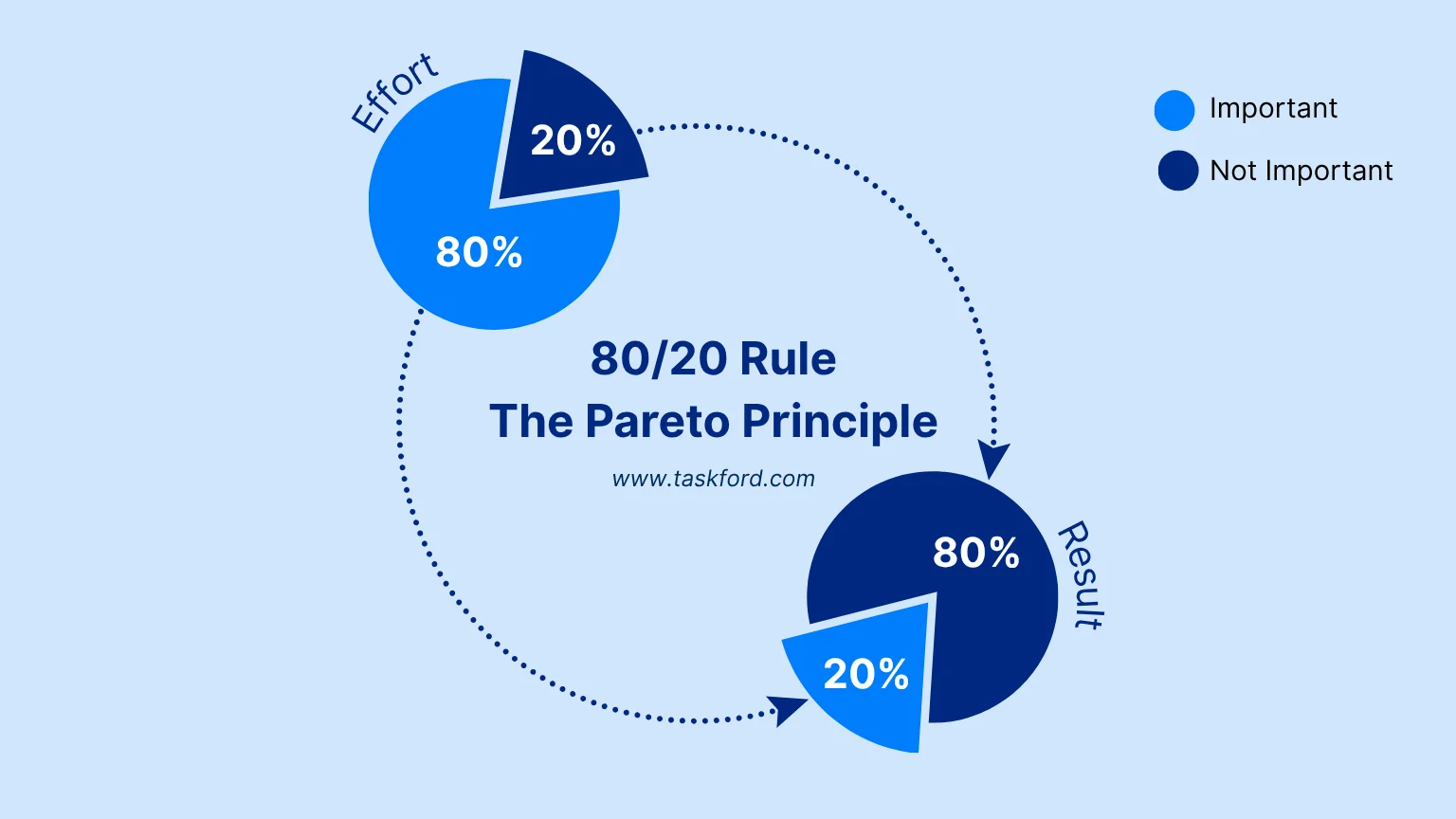
Applying It to Agile
In Agile, the Pareto Principle suggests that 20% of backlog items deliver 80% of user or business value. Recognizing which items belong in that 20% allows teams to work smarter—not harder—by focusing energy on what makes the biggest difference.
The goal isn’t to complete everything—it’s to complete what truly matters
Why It Matters in Agile?
Agile thrives on adaptability and continuous delivery, but teams can only adapt effectively when priorities are clear. When backlogs grow unchecked, effort gets diluted across too many directions, making it difficult to deliver tangible results.
The 80/20 mindset counters this by promoting value-driven focus. It helps teams:
- Identify which backlog items produce the highest impact.
- Align work with customer and business outcomes.
- Avoid “feature bloat” and unproductive busywork.
- Streamline sprint planning and workload distribution.
This approach is especially powerful during backlog refinement sessions, where teams decide what’s relevant, valuable, and ready for development.
Understanding the Agile Backlog: A Quick Refresher
Before applying any prioritization technique, it’s worth clarifying what the Agile backlog represents—and what it’s not.
A backlog isn’t just a list of to-dos; it’s a dynamic and prioritized queue of work that guides Agile teams toward delivering value. It evolves with customer feedback, stakeholder input, and technical learning.
Related reading: What is Backlog? Key Concepts Exaplained in Agile Project Management.
There are two main types:
1. Product Backlog
The product backlog is a strategic collection of features, enhancements, and technical improvements that define the long-term vision of the product. It’s managed by the Product Owner, who ensures alignment with business goals.
Each item (or Product Backlog Item, PBI) is typically a user story that describes value from the customer’s perspective.
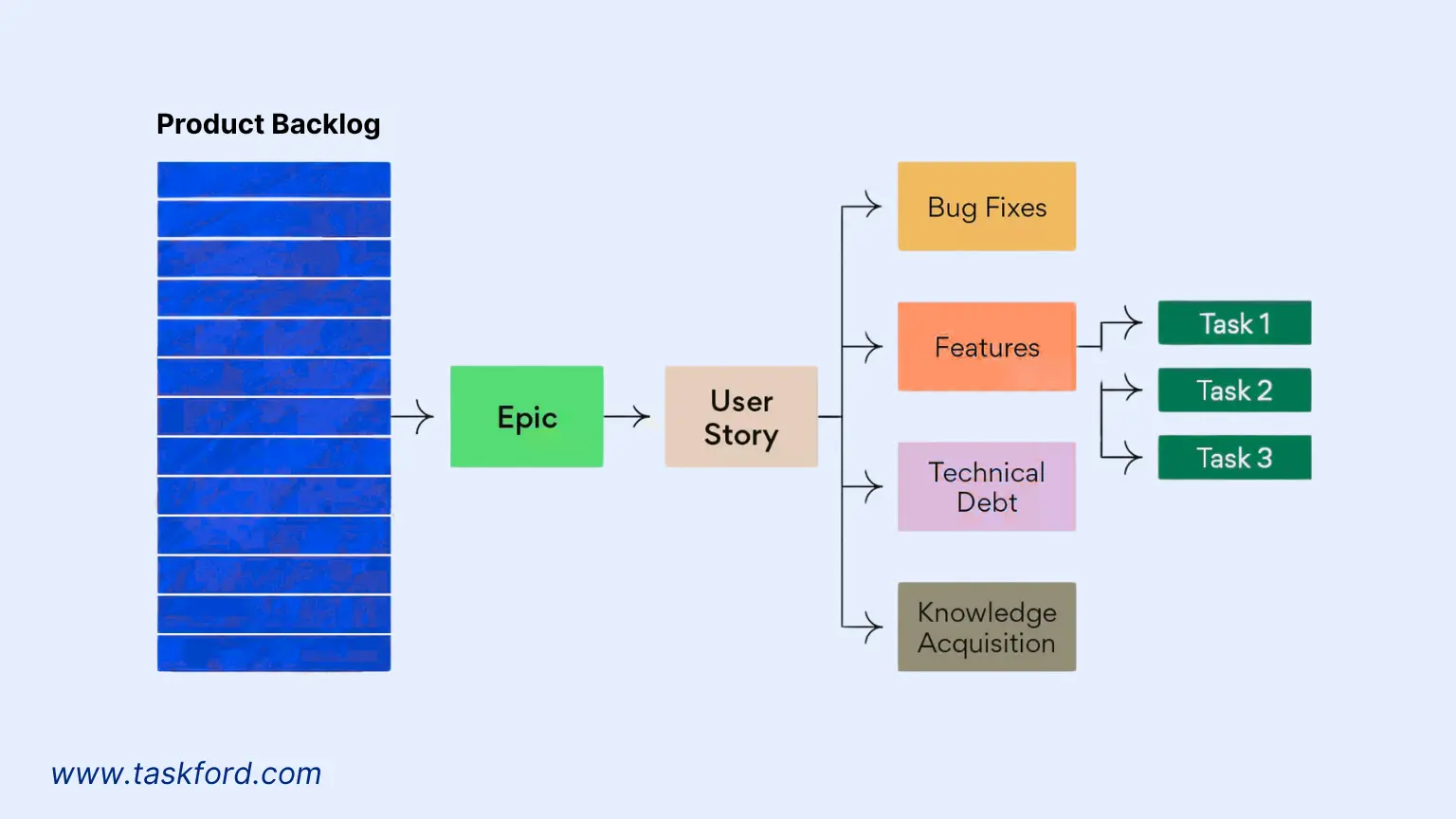
2. Sprint Backlog
The sprint backlog is a tactical subset of the product backlog. It includes the items the team commits to completing in the current sprint. The sprint backlog represents the short-term execution plan, driving iterative progress and aligning development with immediate sprint goals while contributing to the overall product vision.
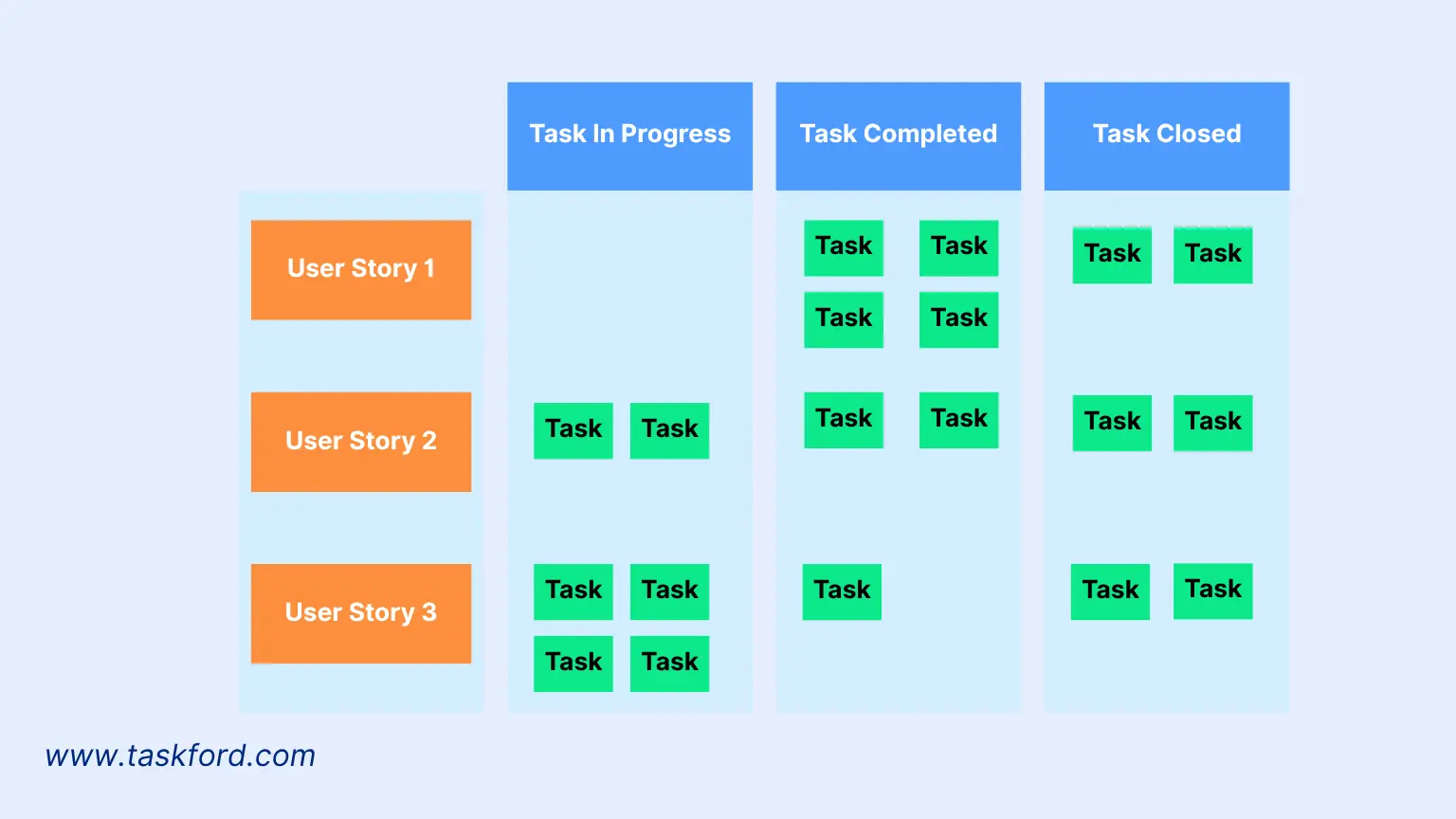
Why Backlog Prioritization Is Essential
Without clear prioritization, backlogs can spiral out of control. Teams lose sight of what’s truly important, and decision-making becomes reactive rather than proactive.
A well-prioritized backlog ensures that:
- Focus remains on high-value outcomes, ensuring that work aligns with business goals. Communication with stakeholders stays transparent, helping everyone stay aligned on what’s being worked on and why.
- Resources are used effectively, preventing overload and reducing unnecessary rework.
- Sprint planning and forecasting become more predictable, helping teams plan with confidence.
Frameworks like MoSCoW, WSJF, and RICE help structure backlog decisions. The 80/20 Rule further sharpens this focus by asking, “Is this part of the 20% of work that delivers 80% of the value?”
By continuously prioritizing the work that matters most, teams can avoid clutter and maintain a clear path toward achieving their product goals.
How to Apply the 80/20 Rule to Your Agile Backlog
Applying the Pareto Principle to your agile backlog is a straightforward but powerful way to maximize the impact of your team’s work. By focusing on the 20% of backlog items that deliver 80% of the value, you ensure that your team’s time and resources are spent on the most important tasks. Here’s a step-by-step guide to applying the Pareto Principle to your backlog management process.
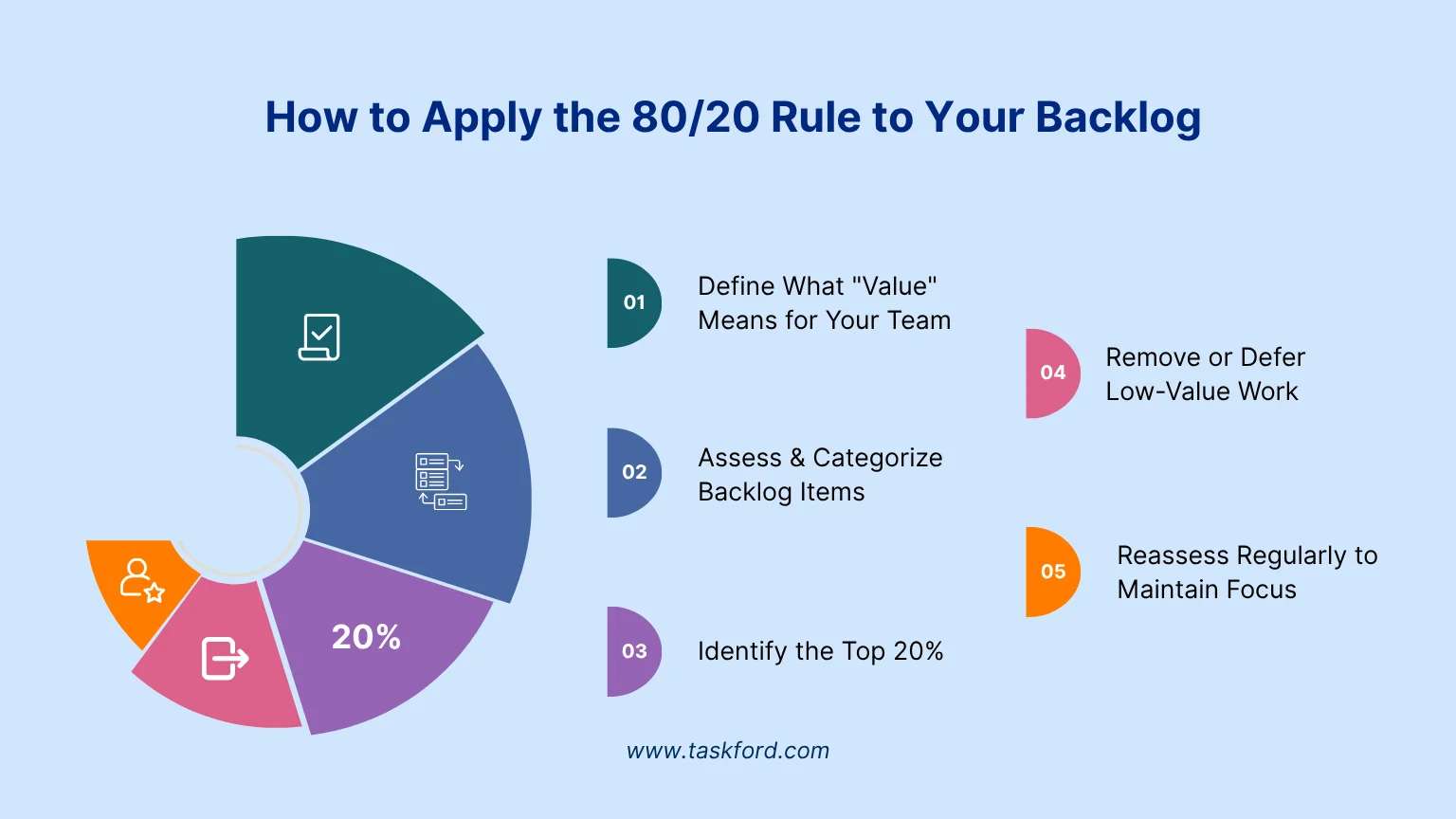
Step 1: Define What "Value" Means for Your Team
Before you can identify the 20% of backlog items that provide the most value, you first need to define what “value” means for your project.
- Is value defined by customer satisfaction, business impact, or technical improvements?
- Is it a feature that drives user engagement or a bug fix that addresses a pain point for your most valuable customers?
Example: For a SaaS product, "value" might mean improving features that drive user retention or implementing bug fixes that directly affect user experience.
Once you’ve defined what constitutes value for your team, it’s easier to evaluate each backlog item objectively.
Step 2: Assess and Categorize Backlog Items
Begin with a backlog grooming session. Review each item in your product backlog and sprint backlog, asking questions such as:
- Does this item directly support our current sprint or product goals?
- What user or business metric will this improve?
- Is this a must-have, should-have, or nice-to-have?
Tag or group items by their potential impact:
- High Impact – Essential for delivering measurable results.
- Medium Impact – Valuable but not urgent.
- Low Impact – Optional improvements or deferred ideas.
Step 3: Identify the Top 20%
Now focus on the top 20% of items that represent your greatest opportunity for value creation. These might include features frequently requested by users, performance issues affecting retention, or automations that save time for internal teams.
Look for data patterns:
- Repeated user feedback or requests
- Metrics showing high-impact bottlenecks
- Stakeholder priorities with clear business cases
These high-value items should move to the top of your Agile backlog, ready for upcoming sprints.
Step 4: Remove or Defer Low-Value Work
Once you've identified the top 20%, it’s important to address the remaining 80% of work. Not all of it is necessarily useless, but much of it can be deferred or removed:
- Archive low-value items for future consideration.
- Defer non-urgent or minor requests for later sprints.
- Merge related items to reduce redundancy and simplify the backlog.
The goal is to keep your backlog lean and focused on delivering high-impact work. You’ll avoid the clutter and ensure that every sprint is dedicated to the most important tasks.
Step 5. Reassess Regularly to Maintain Focus
The 80/20 rule isn’t a one-time exercise. Your backlog should evolve as you gather new data, customer feedback, and market changes. Regularly reassess and refine your backlog to ensure you are always working on the top 20% of value-driving work.
- Backlog Refinement: Use regular backlog grooming sessions to reevaluate priorities based on the latest insights.
- Sprint Reviews: After each sprint, assess whether the prioritized work delivered the expected value and adjust future priorities accordingly.
This continuous evaluation ensures that your backlog stays aligned with your product’s goals and that you are consistently delivering what matters most.
Example: Applying the 80/20 Rule in Practice
Consider a software company developing a project management platform. Their product backlog includes over 150 items: new features, bug fixes, and UI improvements.
After reviewing analytics and customer feedback, the team realizes:
- 70% of user complaints relate to dashboard performance.
- 20% of feature requests involve Gantt chart customization.
- A handful of improvements to reporting exports could unlock major client renewals.
Focusing on these top 20% of items, dashboard optimization, Gantt flexibility, and reporting improvements, leads to:
- 40% reduction in churn rate.
- 30% faster feature adoption.
- More predictable sprint outcomes.
This outcome reinforces that doing less — but doing it better — produces measurable impact.
Benefits of Using the 80/20 Rule in Agile Backlog Prioritization
Adopting the Pareto Principle in agile backlog management delivers both immediate and long-term benefits, helping teams focus on what matters most and achieve higher-value outcomes. Here are the key benefits:
1. Focused Value Delivery
By prioritizing the most impactful tasks (the 20% that delivers 80% of the results), you ensure that your team isn’t bogged down by low-value work. This focus allows your team to dedicate time and energy to tasks that have the highest return on investment and are most aligned with business goals.
2. Clearer Sprint Planning
When your backlog is focused on the highest-value tasks, sprint planning becomes much more efficient. There’s less confusion about what should be tackled next, and the team can quickly identify the key deliverables. This results in more accurate capacity planning and better predictability in terms of what can be achieved within a sprint.
3. Reduced Waste
The 80/20 approach helps eliminate unnecessary tasks and reduce redundancy. By removing low-priority work, you free up valuable resources and time, allowing the team to focus on initiatives that have a greater impact. This leads to improved productivity and better use of resources.
4. Stronger Stakeholder Alignment
Prioritizing work using the 80/20 Rule provides clear reasoning behind your decisions, making it easier to communicate priorities to stakeholders. It helps to justify why some features or tasks are being tackled first and others are deferred.
Quick Tips to Apply the 80/20 Rule Effectively
Here are some practical tips to help you get started and ensure it delivers maximum value for your team:
- Identify Key Value Drivers: Start by defining what value means for your product. Whether it’s customer satisfaction, revenue growth, or performance, ensure everyone on the team understands what drives the most impact for the business.
- Assess and Categorize Backlog Items: Evaluate each item in your backlog and categorize it by impact. Use metrics or team feedback to help you decide which 20% of tasks will make the most significant difference.
- Focus on High-Impact Work First: Prioritize the top 20% of backlog items that directly support your business goals, customer needs, or product vision. These should be your focus for the next sprint or iteration.
- Review Regularly: This approach isn’t a one-time exercise. Regularly refine your backlog during grooming sessions to reassess what’s high value. As the market and customer needs evolve, so should your priorities.
- Combine with Other Frameworks: The 80/20 approach works well alongside other prioritization methods like RICE, WSJF, or MoSCoW. Use these frameworks to further refine your backlog and make more data-driven decisions.
How Tools Like TaskFord Can Support the 80/20 Approach
TaskFord - the comprehensive project management platform designed to help teams streamline their workflows, improve collaboration, and deliver projects efficiently. Built with Agile principles in mind, TaskFord allows teams to effectively manage backlogs, sprints, and productivity metrics, ensuring focus on high-value tasks that align with business goals.
With TaskFord, teams can:
- Backlog Management:
Easily visualize and prioritize backlog items, categorizing them by value and effort. TaskFord’s intuitive interface allows teams to keep the backlog organized and aligned with product goals, so you can consistently focus on the most important work.
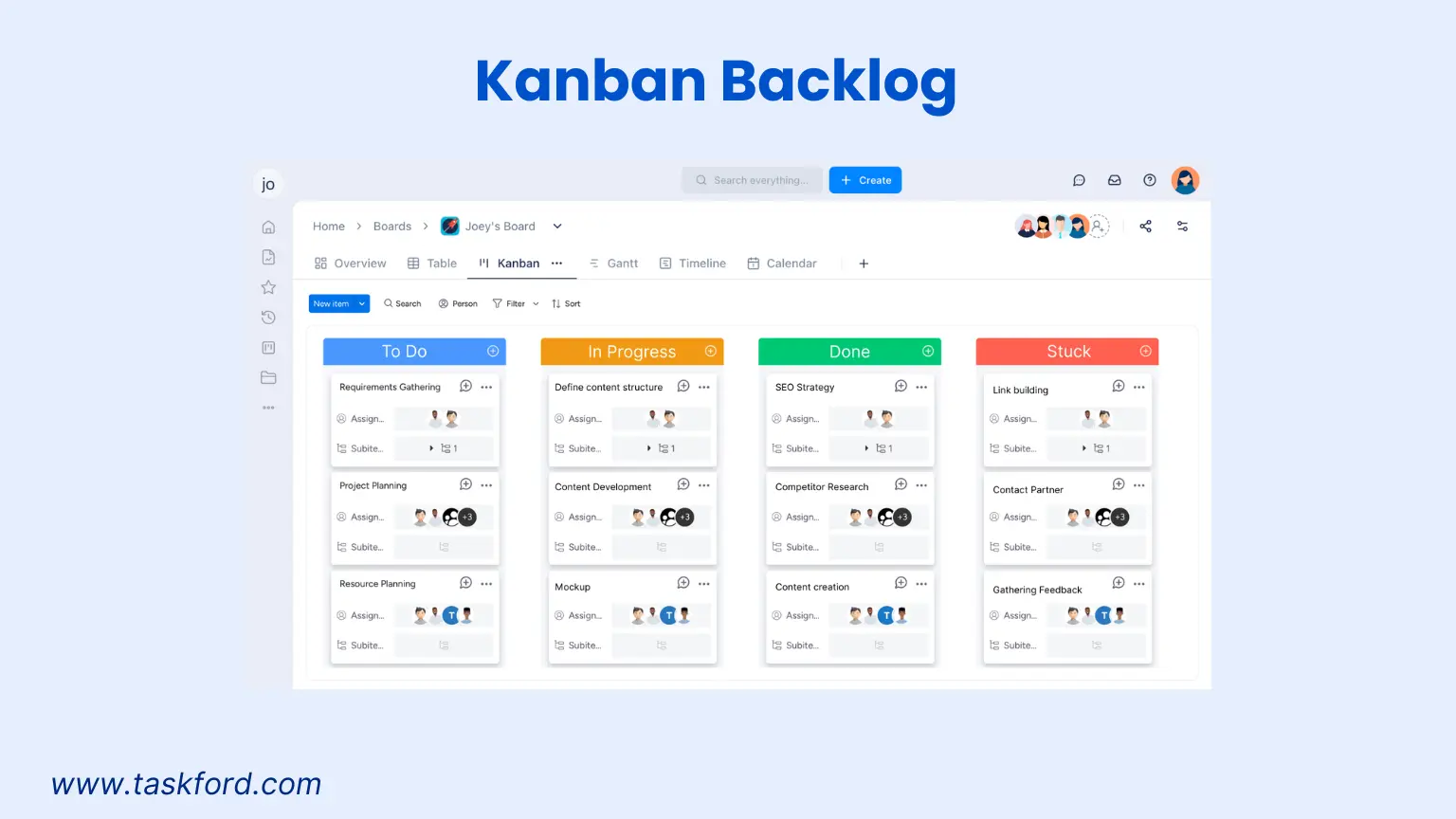
- Workload and Capacity Views:
TaskFord provides Workload Views, helping you track team capacity and compare it against the required effort for each task. This ensures that you aren’t overloading the team and can adjust priorities as needed to keep workloads balanced and achievable.
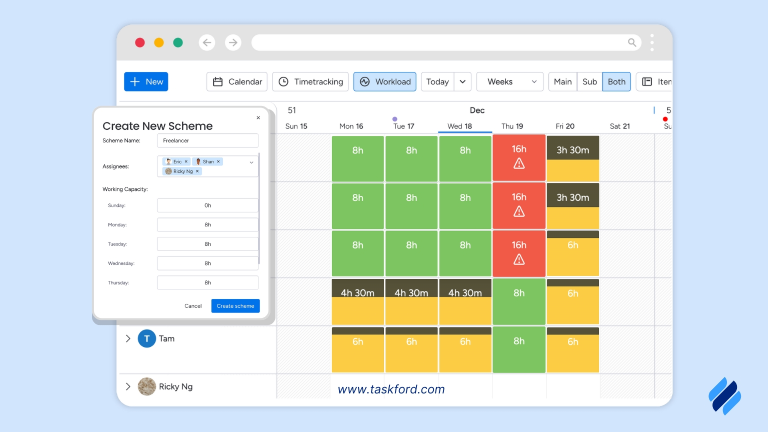
- Sprint Planning & Tracking:
With sprint tracking, you can monitor progress in real-time and make adjustments if necessary. TaskFord keeps teams on track, ensuring predictable and efficient sprint cycles while delivering on high-priority tasks that drive value.
- Reporting & Analytics:
Generate actionable insights with TaskFord’s analytics and reporting tools. Track the success of completed tasks, analyze trends, and continuously improve team performance. Make data-driven decisions to refine your process and improve efficiency over time.
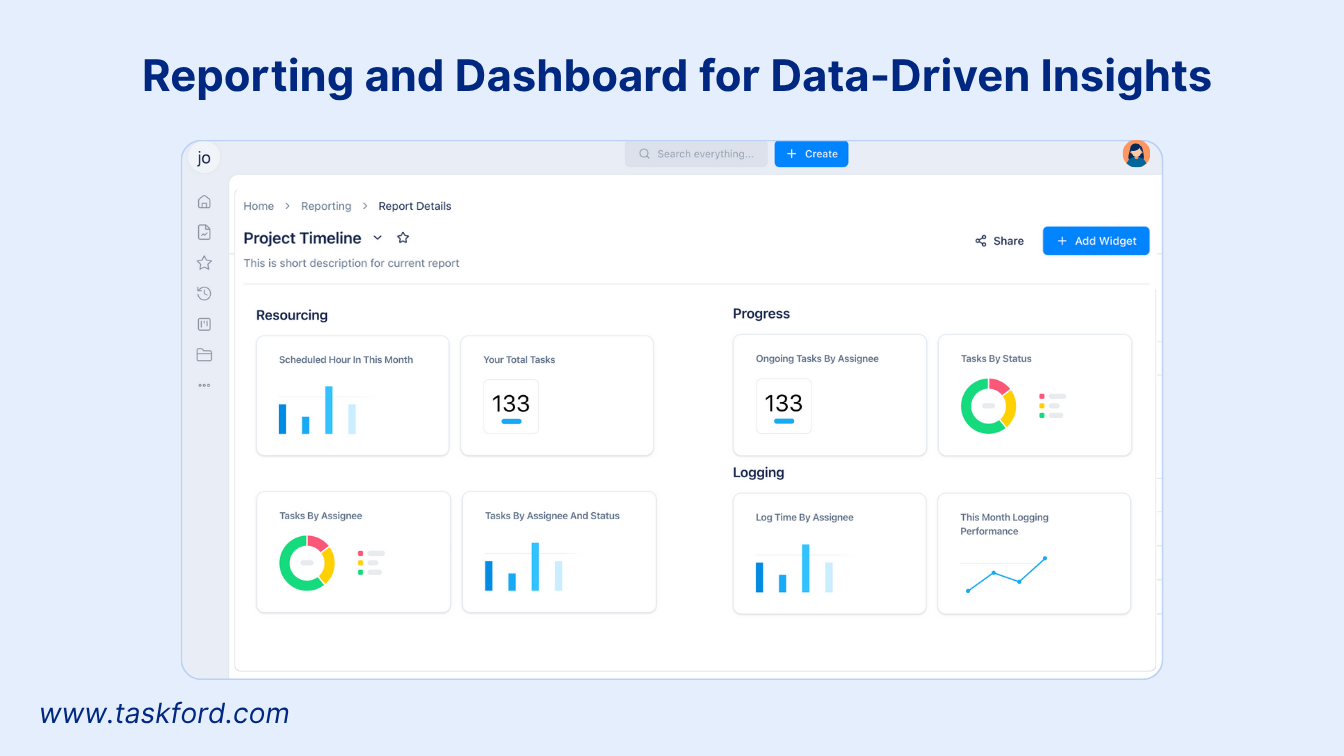
Thus, TaskFord is the perfect solution for teams looking to manage their projects more effectively, deliver value faster, and keep their processes aligned with business goals.
Conclusion
Applying the 80/20 Rule to your Agile backlog helps teams prioritize the most impactful tasks, resulting in more efficient workflows and better outcomes. By focusing on the 20% of tasks that provide 80% of the value, teams can eliminate unnecessary work, improve sprint planning, and ensure alignment with business goals.
This approach allows for smarter decision-making, improved collaboration, and more predictable delivery. By continuously reassessing priorities and focusing on high-value tasks, teams can stay adaptable and maintain steady progress towards their objectives.
Ultimately, applying the 80/20 Rule to backlog management leads to greater efficiency, better stakeholder alignment, and a product that truly meets user and business needs.
You May Also Like:
- Sprint Planning - An Advanced Agile Guide For Project Managers
- Retrospective Meetings - How to Make It Engaging: Turn Awkward Silence into Real Talk
- RACI Chart in Project Management: Rules & Examples [Free Download]
- Agile Project Management: The Basics for Beginners
Making work simpler,
smarter, and more connected
Join our waitlist and be notified first.

Related Blog
Subscribe for Expert Tips
Unlock expert insights and stay ahead with TaskFord. Sign up now to receive valuable tips, strategies, and updates directly in your inbox.


